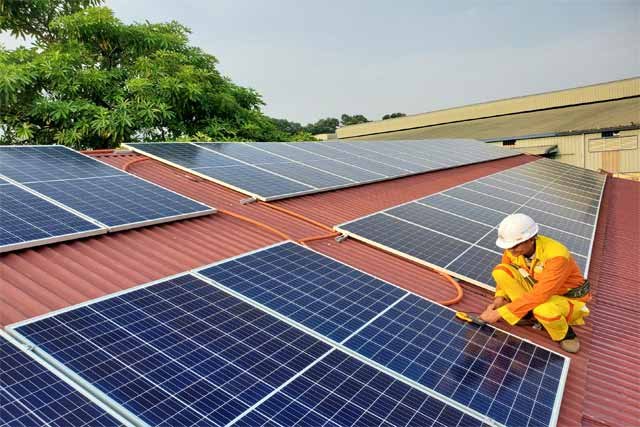Welcome to the era of limitless solar potential! Imagine solar panels that are not bound by the constraints of rigidity and inefficiency. Enter the world of XCV panel, a groundbreaking innovation in renewable energy. Are you ready to delve deeper into these versatile and highly conductive marvels? Join us on an exciting journey as we uncover their remarkable attributes, explore their prospective applications, and unveil the thrilling journey of their development.
XCV Panels: Solar Innovation Meets Adaptability

XCV panels, short for “eXtremely Conductive & Versatile” panels, are crafted using highly conductive materials that efficiently convert solar energy into electrical power. They are not only lighter but also more flexible compared to conventional solar panels. The name “XCV” epitomizes their effectiveness and adaptability, making them suitable for many applications, from powering mobile electronics and automobiles to meeting the energy demands of residential, commercial, and industrial settings.
Key Features of XCV Panels: Efficiency, Flexibility, and Beyond!
Currently, in the developmental phase, XCV panels offer many advantages over traditional solar panels. Let’s take a closer look at some of their standout features:
- High Efficiency: XCV panels have the potential to achieve up to 20% greater efficiency in converting solar energy into electricity compared to the 15% efficiency of conventional solar panels. This means they can generate more power with the same amount of sunlight, paving the way for increased energy production.
- Lightweight: XCV panels weigh up to 50% less than their conventional counterparts. Their reduced weight simplifies installation and makes them more portable and versatile for various applications.
- Flexibility: The flexibility of XCV panels is a game-changer. They can be bent and twisted without losing efficiency, enabling innovative applications previously unattainable with rigid solar panels.
- Durability: Built to withstand the harshest conditions, XCV panels are designed to resist UV radiation and adverse weather conditions. This resilience makes them an excellent choice for outdoor installations, enhancing their lifespan.
- Emission Reduction: By providing a clean and sustainable source of electricity, XCV panels have the potential to contribute significantly to reducing carbon emissions, aligning with the global drive towards a greener future.
In addition to these benefits, XCV panels are anticipated to become more accessible and cost-effective as research and development progress, ultimately outperforming traditional solar panels’ efficiency and affordability.
Read More: The Importance of Regular Solar Panel Cleaning
How Do XCV Panels Work?

While a fully functional XCV panel model does not exist, ongoing research efforts pave the way for their development. The main challenge lies in identifying exceptionally conductive and durable materials that can surpass the limitations of traditional materials like silicon, which need to be more conductive to achieve the desired efficiency. Researchers are exploring alternative materials such as graphene, carbon nanotubes, and metal alloys.
Moreover, the design of XCV panels demands innovative solutions for effective sunlight capture and utilization. Traditional solar panels employ grids of solar cells, but this structure may only be optimal in some scenarios. Researchers are exploring novel designs, including single-sheet materials and three-dimensional structures, to enhance efficiency and versatility.
Leading Research Centers in the XCV Panel Development
Several research teams worldwide are actively working on advancing XCV panel technology. Some notable institutions and organizations in this field include:
- The United States National Renewable Energy Laboratory (NREL)
- The German company Fraunhofer Institute for Solar Energy Systems ISE
- The University of Oxford in the United Kingdom
- The University of Tokyo in Japan
- The Scientific Academy of China
These research groups employ various techniques and approaches to advance XCV panel development. While progress is promising, it is still too early to predict when XCV panels will become commercially available.
Read More: 4 Things All Good Solar Energy Providers Have in Common
Applications of XCV Panels

XCV panels hold immense promise across a wide range of applications, redefining the possibilities of solar energy:
- Residential Solar Panels: XCV panels can power homes and businesses, offering increased energy production with the same amount of sunlight. Their lightweight and flexibility make them easy to install on roofs and other surfaces.
- Commercial Solar Panels: Businesses can benefit from XCV panels by powering large structures and commercial establishments, reducing their reliance on fossil fuels, and lowering energy costs.
- Mobile Solar Panels: XCV panels are ideal for automobiles and portable electronics, catering to outdoor or off-grid use. Their lightweight and portability make them a perfect energy source for remote locations.
- Space Solar Panels: XCV solar panels can revolutionize space exploration by producing more efficient energy for satellites and spacecraft. Their durability and lightweight properties make them well-suited for the harsh conditions of outer space.
- Construction Materials: XCV panels can be integrated into building materials, such as walls and roofs, reducing energy consumption and enhancing sustainability.
Benefits and Drawbacks of XCV Panels

As with any emerging technology, XCV panels come with their set of advantages and drawbacks:
Benefits:
- Higher Efficiency: XCV panels offer up to 20% higher efficiency in converting sunlight into electricity than conventional solar panels, resulting in increased energy output.
- Lighter Weight: Their reduced weight (up to 50% less than conventional panels) simplifies transportation and installation, lowering associated costs.
- Greater Adaptability: XCV panels can be bent and shaped without sacrificing performance, making them suitable for various applications.
- Durability: Resistant to UV radiation and harsh weather conditions, XCV panels have a longer lifespan, especially in outdoor applications.
- Emission Reduction: By providing clean and sustainable electricity, XCV panels contribute to reducing carbon emissions and mitigating climate change.
Drawbacks:
- Cost: XCV panels are currently more expensive than conventional solar panels due to their developmental stage. However, ongoing advancements are expected to drive down costs in the future.
- Availability: As XCV panels are still in the development phase, their availability is limited compared to conventional panels. This may change as the technology matures.
- Performance in Low Light: XCV solar panels may not perform as effectively as conventional panels in low-light conditions because they use more conductive materials.
- Research and Development Uncertainty: Given that XCV panels are still under development, questions about their long-term reliability and performance remain.
Read More: 10 Technology Inventions Will Change the Near Future
Final Verdict
XCV panels shine as a beacon of hope in a world needing sustainable solutions. Despite being experimental, their potential to revolutionize solar energy is undeniable. With increased efficiency, mobility, and versatility, they promise to reshape how we harness the sun’s power for our needs. The question is not if XCV panels will become a reality but when, as research and development continue to make significant strides. Thanks to the potential of XCV panels, the future of solar energy appears more promising than ever.
Frequently Asked Questions
Here are answers to some frequently asked questions about XCV panels:
How efficient are XCV panels compared to conventional solar panels?
XCV panels can convert sunlight into electrical energy with up to 20% efficiency, compared to the 15% efficiency of regular solar panels. Their greater efficiency enables them to generate more energy from the same amount of sunlight.
Are XCV panels more lightweight and flexible than conventional solar panels?
Yes, XCV panels are up to 50% lighter than conventional solar panels, making them easier to transport and install. Their flexibility allows them to be bent and twisted without losing efficiency, expanding their range of applications.
Are XCV panels currently available in the market?
XCV panels are still in the developmental stage and are not commercially available. There is no fixed date for their market release, but research teams worldwide are actively working on their development.





